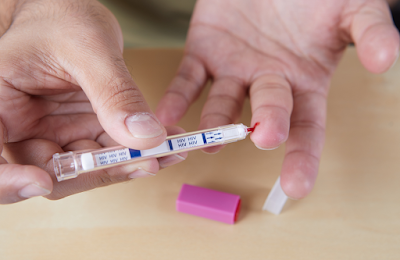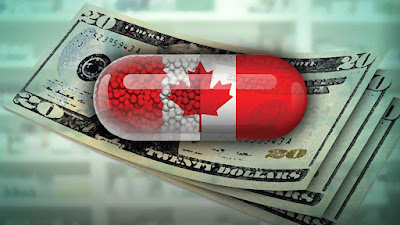By: Ranier Simons, ADAP Blog Guest Contributor
Funding is the backbone of most healthcare initiatives, including navigating the landscape of HIV/AIDS. The fight against HIV includes testing, surveillance, treatment, education, and supporting basic life needs. Community centers provide many of these services to vulnerable populations, getting their funding from federal dollars through states. Budgetary decisions that adversely affect such funding can set back strides made through successful initiatives. Two states, New York, and Tennessee are in the spotlight due to controversial proposed decisions.
 |
| Photo Source: City & State New York |
One such questionable budgetary decision comes from the governor of New York, Kathy Hochul. In the past, the governor has expressed dedication to ending the HIV/AIDS epidemic in New York state. In December 2022, she signed legislation requiring insurance companies to cover PrEP and PEP.[1] However, many view her present proposal to end a current Medicaid drug plan as being damaging. The program, known as the 340B Drug Pricing Program, allows safety net providers to purchase discounted life-saving HIV-related drugs and use the savings to provide essential services.[2] Operationally, the program enables centers to buy the drugs at cost but get reimbursed at the high rate that health insurance company plans pay for the medications. As a result, they can use the difference to pay for other services that are instrumental in supporting the needs of the populations being served.
In addition to supplying medications, many facilities use the extra funds to help with housing, food, and transportation. Losing the funding would result in many centers losing large parts of their budgets, which would be detrimental to the vulnerable populations that depend on their services. Losing the ability to continue to help the PLWHA with affordable housing could mean that some could become homeless. Unstable housing results in poor HIV/AIDS outcomes resulting from issues such as poor medication adherence.
Hochul’s budget proposal is a continuation of Governor Andrew Cuomo’s Medicaid Pharmacy Carve-Out. The Medicaid Pharmacy Carve-Out is an attempt to boost the state’s revenue. Advocates argue that it adversely affects the 340B program because it gives the money directly to the state instead of directly to the facilities, as is the current status quo. The funds from the program help 2.3 million New York residents, 90 percent of who are low-income and 70 percent are people of color.[2] The New York State Department of Health states that Hochul plans to transition to the Medicaid Pharmacy Benefit of the Medicaid Pharmacy Carve-Out on April 1, 2023, but remains dedicated to ensuring facilities still get needed funds. Many health centers say that the proposed changes do not include enough money to replace the millions of dollars they would lose and have proposed legislative compromise that would give Hochul the savings she wants without destroying the pipeline of funding in place that is the lifeline for other services.[3]
 |
| Photo Source: Rolling Stone |
Another budgetary decision receiving push-back comes from Tennessee. Governor Bill Lee announced, in January 2022, that the state would start refusing federal funds for HIV-related programming. The funding being cut is for HIV prevention, detection, and treatment programs that are not affiliated with metro health departments.[4] The funding pots specifically identified to be rejected are P.S.18-1802 and P.S.20-2010. One is for HIV surveillance and prevention, with the other supporting state health departments in ending the HIV epidemic.[5] Currently, Tennessee receives about $8.3 million in total from the two funding sources.
Parts of Tennessee are hotspots for HIV transmission, with Memphis being among the top 50 communities nationwide for HIV transmission rates.[6] Shelby County, which contains several cities, including Memphis, is one of the areas targeted by the CDC’s EHE (Ending the HIV Epidemic in the U.S.) initiative. The EHE focuses first on 50 local areas that account for more than half of the nation’s new HIV diagnoses and seven states with a substantial rural burden.[7] Additionally, the CDC’s 2020 analysis included forty-two counties in Tennessee among the top two hundred and twenty counties nationwide most vulnerable to an HIV outbreak.[7]
State officials and the Governor state that they will start refusing the $8.3 million in funding to be more independent and less reliant on federal dollars. Governor Lee has also stated that he can ensure HIV funding is spent in ways that best serve Tennessee better than what he feels are strings attached to federal funding.[8] The Tennessee Department of Health also expressed that priorities in HIV prevention funding would be shifted to focus on first responders, victims of human trafficking, and pregnant women. Data from amfAR, The Foundation for AIDS Research, shows that it is not evidence-based decision-making as such a shift would only prevent about nine cases of HIV transmission annually. The most at-risk populations in the state include transgender individuals, people who inject drugs, cisgender women, and men who have sex with men. According to amfAR, focusing on these at-risk groups would prevent more than 500 new infections yearly.[9]
 |
| Photo Source: KevinMD.com |
Moreover, the state has not indicated how it will make up for the $8.3 million lost and has suggested that funding will go through state-funded metro health centers. This does not address the needs of rural areas. Without the funding, much evidence-based community programs will end. Testing, a keystone of HIV prevention, will be drastically reduced, access to services will decrease, and some clinics and community centers that do the most work will close.[10]
It is imperative that funding structures stay in place that allow trusted community centers to continue to do the work that they do prevent HIV, treat HIV, and wholistically support the lives of PLWH. People’s lives are at stake, and funding decisions should only be based on scientific data, not political and ideological paradigms. HIV advocates and healthcare providers are closely watching the activities in New York and Tennessee, and many are also hoping that harmful legislation does not spread to other states.
[1] Reisman, N. (2022, December 22). Hochul approves law meant to reduce HIV infections. Retrieved from https://spectrumlocalnews.com/nys/central-ny/ny-state-of-politics/2022/12/22/hochul-approves-law-meant-to-reduce-hiv-infections-
[2] PRivas, S. (2022, February 7). HIV/AIDS activists urge Hochul to repeal Medicaid carve-out. Retrieved from https://www.news10.com/news/hiv-aids-activists-urge-hochul-to-repeal-medicaid-carve-out/
[3] DeWitt, K. (2023, February 14). HIV/AIDS health centers say Hochul's proposal could gut services for most vulnerable. Retrieved from https://www.wamc.org/2023-02-14/hiv-aids-health-centers-say-hochuls-proposal-could-gut-services-for-most-vulnerable
[4] Kennedy, C., Watts, M. (2023, January 2023) Tennessee to cut off funding to nonprofits for HIV prevention, testing, treatment. Retrieved from https://www.commercialappeal.com/story/news/health/2023/01/18/tennessee-cuts-funding-hiv-treatment-testing-prevention/69820175007/
[5] Laws, J. (2023, January 30). Tension in Tennessee: HIV Crisis Looms. Retrieved from https://www.hiv-hcv-watch.com/blog/jan-30-23
[6] Farmer, B. (2023, February 3). Why Tennessee is turning down millions of federal dollars for HIV prevention. Retrieved from https://www.marketplace.org/2023/02/03/why-tennessee-is-turning-down-millions-of-federal-dollars-for-hiv-prevention/
[7] CDC. 2022. Ending the HIV Epidemic in the U.S. (EHE).Retrieved from https://www.cdc.gov/endhiv/jurisdictions.html
[8] Straube, T. (2023, January 24). Tennessee Rejects “Free Money” From U.S. Government to Prevent HIV. Retrieved from https://www.poz.com/article/tennessee-rejects-free-money-us-government-prevent-hiv
[9] Kennedy, C. (2023, February 14). 'A public health crisis': What state's rejection of HIV funds could mean for Shelby County. Retrieved from https://news.yahoo.com/public-health-crisis-states-rejection-110047477.html?soc_src=social-sh&soc_trk=tw&tsrc=twtr&guccounter=1
[10] King, P. (2023, February 14). Shelby County leaders urge the state to keep federal HIV prevention funding. Retrieved from https://www.msn.com/en-us/news/us/shelby-county-leaders-urge-the-state-to-keep-federal-hiv-prevention-funding/ar-AA17uEkN
Disclaimer: Guest blogs do not necessarily reflect the views of the ADAP Advocacy Association, but rather they provide a neutral platform whereby the author serves to promote open, honest discussion about public health-related issues and updates.







